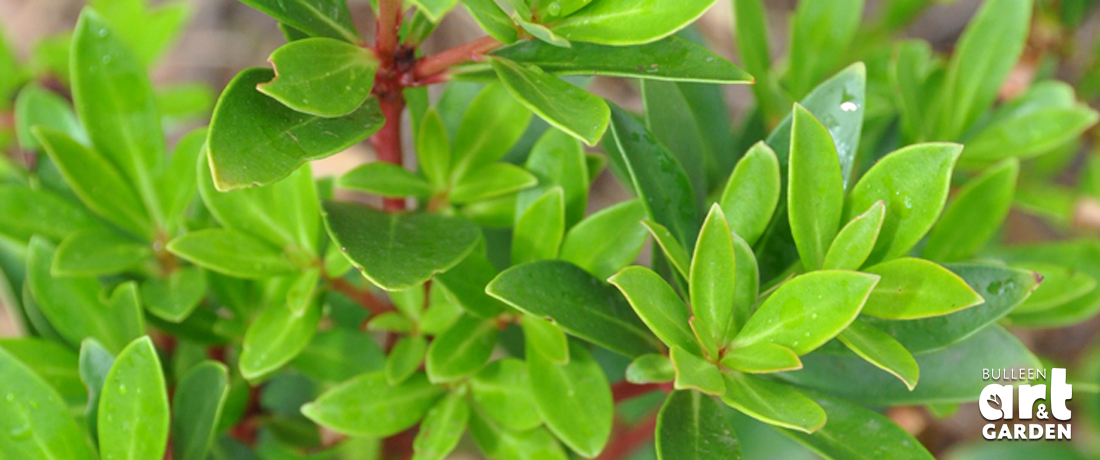
 Important note about plant availability. Important note about plant availability.There are hundreds of factsheets on our website provided for your information. Not all plants will be available at all times throughout the year. To confirm availability please call (03) 8850 3030 and ask for the nursery. |
Tasmannia lanceolata
This lovely example of a bush food plant occurs naturally in the cool, temperate rainforest areas of Tasmania, Victoria and New South Wales. Also known as Native Pepper, Mountain Pepper is a tall, evergreen shrub or small tree. It grows to between three and five metres, and up to ten metres in native habitats. It has distinctive reddish branches and smooth, narrow green leaves. Its creamy flowers appear in small clusters in September, followed by dark red berries that turn black when ripe in around March or April. The leaves have a hot flavour when chewed, and the berries are enjoyed by native birds. Mountain Pepper was used by indigenous tribes along the east coast of Australia as medicine and also a cooking spice. In the kitchen both the leaves and berries can be used to spice up numerous dishes.
Cultivation
You’ll need both a female and male plant to produce fruit. A good windbreak tree, the Mountain Pepper is hardy and frost tolerant, but it’s best to plant in a sheltered site that is either in dappled shade or receives morning sun. Choose a free draining spot and prepare the site with compost and manure, then mulch well after planting to keep the soil moist. Give it a feed with organic slow release fertiliser in early spring and late autumn.
Uses
The Australian native flavour wheel describes the berries as having an “aroma of bush scrub with perfumed, fruity lolly notes. Lingering heat on the palate”, while the leaf has the “aroma of Australian bushland, dry paperbark and herbs. Developing heat on the palate.”
The berries taste fruity to begin with, then the heat starts although it does not linger like chilli does. Both the leaves and the berries can be used as a pepper substitute. Use only a tenth of the amount of berries that you would use in place of normal pepper.
The leaf (often referred to in recipes as Mountain Pepper) is used in spice blends and can be added to spice up breads, sauces, chutneys, flavoured cheeses and olive oils.
Dried berries can be used like peppercorns to add a mild spicy kick to sauces, meat, batter, crumbing, marinades and wherever you would normally add black pepper or chilli. Air dry your berries then grind them in a pepper mill or mortar and pestle. Similarly, the leaves can be dried and ground for cooking and used for the peppery taste. Use the milder dried and ground leaves in curries, or throw a few whole leaves in the roasting dish to pepper up your meat. Try giving your aioli a kick and stir through some dried ground pepper leaf.
You could also try mixing some ground berries into bread dough for a colourful and spicy twang to your loaf; or add them to white chocolate instead of vanilla bean. Don’t forget about the woody stems from the Mountain Pepper tree – they can be used as skewers to infuse a peppery taste into the meat or veg to be skewered. A crowd favourite is ground Mountain Pepper berries in a salt and (Mountain) pepper calamari dish – but let your taste buds do the walking and come up with some new uses of your own!
